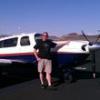New Owner Questions - ROP/LOP & MP/RPM Settings
-
Members Online
- N201MKTurbo
- Flyler
- jetdriven
- phrogpilot73
- toto
- Arthur
- George Thomson
- Skates97
- bigmo
- TheMooneyAnomaly
- RoundTwo
- tankles
- eman1200
- Bruce Case
- kortopates
- 1980Mooney
- redbaron1982
- MaxwellSmart86
- Igor_U
- SARNorm
- Hunter
- Parker_Woodruff
- BlueSky247
- John Mininger
- Mcstealth
- DSAV
- Tmooney
- Greg Ellis
- Ron McBride
- OR75
- M20F-1968
- richardbrochu27
- Pictreed
- dzeleski
- hypertech
- Jayrod
- PeterRus
- 201er


Recommended Posts
Join the conversation
You can post now and register later. If you have an account, sign in now to post with your account.